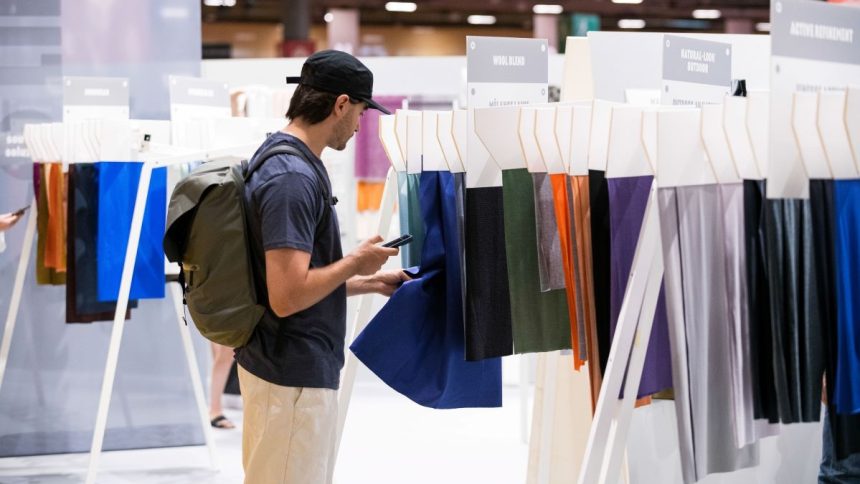1. The Evolution of Fashion: From Past to Future
Fashion has always been a reflection of the times, evolving alongside societal and cultural changes. From the elaborate garments of the Renaissance to the streamlined silhouettes of the Art Deco era, historical fashion trends have left an indelible mark on the industry. Today, as the fashion world looks to the future, it is also influenced by the rise of sustainable and ethical practices and the advancements of technology.
The Influence of Historical Fashion Trends
Historical fashion trends have not only shaped the aesthetics of clothing but have also influenced the way people live and express themselves. Each era has its unique style, and designers constantly draw inspiration from the past to create something new. For example, the corsets of the Victorian era have paved the way for the bodycon dresses of today, highlighting the enduring influence of historical fashion on contemporary designs.
The Rise of Sustainable and Ethical Fashion
In recent years, there has been a growing awareness of the environmental and social impact of the fashion industry. This has led to a rise in sustainable and ethical fashion practices, where designers prioritize the use of eco-friendly materials and fair labor practices. Innovations such as upcycling, where old garments are transformed into new designs, and the use of organic and recycled fabrics are gaining traction. This shift towards sustainability is not just a trend but a necessary step towards a more responsible and conscientious fashion industry.
Technological Innovations Shaping the Future of Design
Technology has dramatically transformed the fashion and design landscape. From virtual reality to 3D printing, emerging technologies are pushing the boundaries of creativity and opening up new possibilities. Designers can now use computer-aided design (CAD) software to visualize and create intricate patterns and designs. Additionally, advancements in textile engineering have led to the development of smart fabrics that can regulate body temperature and even monitor health. These technological innovations are revolutionizing the way fashion is conceptualized, produced, and consumed.
2. Trends and Innovations at Premier Vision
Premier Vision, a leading global event for fashion professionals, showcases the latest trends and innovations in the industry. It brings together designers, fabric manufacturers, and suppliers to exchange ideas and explore new possibilities. The event is renowned for its textile trends, fabrication techniques, and materials that redefine the world of fashion.
The Unveiling of New Textile Trends
At Premier Vision, fabric manufacturers unveil their latest creations, setting the stage for the upcoming seasons. These trends provide insights into the colors, prints, and textures that will dominate the fashion industry. From bold and vibrant hues to delicate pastels, the textile trends at Premier Vision offer designers an opportunity to stay ahead of the curve and infuse their collections with freshness and innovation.
Exploring Innovative Fabrication Techniques
Premier Vision is a hub for showcasing innovative fabrication techniques that push the boundaries of traditional garment construction. Designers and manufacturers collaborate to experiment with unconventional materials and construction methods, resulting in unique and forward-thinking designs. Techniques such as laser cutting, heat bonding, and 3D knitting allow for intricate detailing and new possibilities in garment production.
Revolutionary Materials Redefining Fashion
The search for sustainable and eco-friendly materials is a focal point at Premier Vision. From recycled polyester made from plastic bottles to plant-based fabrics like bamboo and hemp, there is a conscious effort to find alternatives to traditional materials that have a detrimental environmental impact. Additionally, designers are exploring materials with innovative properties, such as self-cleaning fabrics and textiles that change color according to temperature. These revolutionary materials not only redefine fashion but also contribute to a more sustainable future.
3. Collaborative Design for a Sustainable Future
Collaboration between designers and ethical brands has become imperative in the quest for a sustainable future in fashion. By joining forces, they can leverage their individual strengths and create impactful change within the industry.
Collaborations Between Designers and Ethical Brands
Designers are increasingly partnering with ethical brands that prioritize sustainability and social responsibility. These collaborations allow designers to align their creative visions with companies that share their values. By working together, they can bring attention to important issues, such as fair trade, and create collections that not only look good but also do good.
Designing for a Circular Economy
The concept of a circular economy is gaining traction in the fashion industry. Instead of the traditional linear model of production, where garments are made, used, and disposed of, the circular economy aims to minimize waste and maximize resource efficiency. Designers are embracing this approach by creating garments that are durable, repairable, and recyclable. They are also exploring new business models, such as clothing rental and resale platforms, to extend the lifecycle of their designs.
Using Technology to Reduce Waste in Fashion
Technology plays a vital role in reducing waste in the fashion industry. Designers are utilizing innovative solutions, such as 3D body scanning, to create made-to-measure garments, reducing the need for excessive production and returns. Virtual prototyping and digital sampling also help minimize waste by reducing the amount of physical samples needed during the design process. These technological advancements not only streamline production but also contribute to a more sustainable and efficient fashion industry.
4. Fashion and Design Forecast: What’s Next?
As the fashion industry continues to evolve, it is essential to look ahead and anticipate the trends and innovations that will shape its future. From the impact of artificial intelligence to the potential of virtual reality, exciting advancements are on the horizon.
The Impact of Artificial Intelligence on Fashion
Artificial intelligence (AI) is revolutionizing various industries, and fashion is no exception. AI-powered algorithms can analyze vast amounts of data, allowing designers to understand consumer preferences and trends better. Virtual stylists powered by AI can provide personalized fashion recommendations based on individual body types, preferences, and occasion. Additionally, AI can streamline the supply chain by optimizing inventory management and predicting demand, reducing waste and increasing efficiency.
Exploring the Potential of Virtual Reality in Design
Virtual reality (VR) has the potential to transform the way designers create and present their collections. With VR technology, designers can immerse themselves in virtual environments and experiment with different designs, colors, and fabrics seamlessly. VR also offers an innovative way for consumers to experience fashion, allowing them to virtually try on clothes and accessories before making a purchase. This technology eliminates the need for physical samples and reduces waste, making fashion more accessible and sustainable.
The Future of 3D Printing and Fashion
3D printing has already made a significant impact on various industries, and its potential in the fashion world is boundless. Designers can utilize 3D printing to create intricate and customized garments with precision and speed. This technology opens up new possibilities for experimentation, enabling designers to bring their most imaginative creations to life. 3D-printed textiles can also reduce waste by only using the necessary amount of material, making it a sustainable alternative to traditional garment production.
As the premier event for fashion and design, Premier Vision showcases the passion, creativity, and innovation that drive the industry forward. From historical influences to sustainable practices and technological advancements, the event offers a glimpse into the future of fashion. By embracing collaboration, sustainability, and emerging technologies, the fashion industry has the power to shape a brighter and more responsible future.
Lynn Martelli is an editor at Readability. She received her MFA in Creative Writing from Antioch University and has worked as an editor for over 10 years. Lynn has edited a wide variety of books, including fiction, non-fiction, memoirs, and more. In her free time, Lynn enjoys reading, writing, and spending time with her family and friends.















